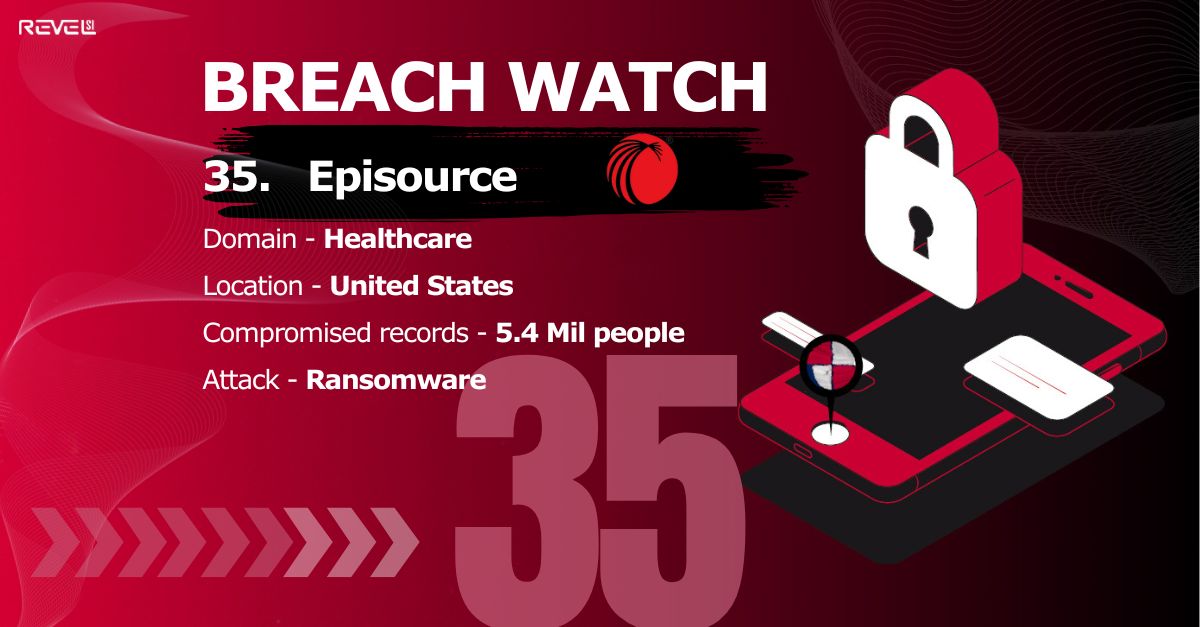The Episource Data Breach: When 5.4 Million Healthcare Records Go Silent

Overview
In early 2025, Episource, a widely used third-party vendor in the healthcare industry, quietly became the center of a major cybersecurity incident. Known for its medical coding and risk adjustment services, Episource’s systems were infiltrated by an unauthorized actor, leading to the exposure of highly sensitive personal and medical information belonging to over 5.4 million individuals.
Despite the breach occurring in late January, public disclosure and notifications didn’t begin until April, sparking concern over response timelines, data protection practices, and the broader vulnerabilities in healthcare’s reliance on external service providers. For affected healthcare organizations like Sharp HealthCare, the ripple effects have already begun, with patient notifications underway and public trust hanging in the balance.
How It Happened
The breach took place between January 27 and February 6, 2025, when threat actors gained unauthorized access to Episource’s internal systems. While the company has not confirmed the specific method used, the timeline and data exfiltration patterns suggest a ransomware-style compromise. Episource only became aware of the incident on February 6, at which point they took immediate steps to isolate their systems and brought in cybersecurity experts to investigate.
Law enforcement was contacted, and a formal forensic review was launched. However, it wasn’t until late April that individuals began receiving breach notifications, and Episource formally reported the incident to regulators like the U.S. Department of Health and Human Services (HHS) in June.
The systems affected were deeply integrated into the workflows of multiple healthcare organizations, which had relied on Episource for processing patient records, coding services, and risk analytics. This widespread integration amplified the scope of the impact, making it not just an Episource issue but a systemic one.
Risk
The consequences of this breach are serious for both individuals and organizations. On the personal level, stolen data included names, Social Security numbers, birth dates, addresses, medical diagnoses, test results, health plan identifiers, and in some cases, full treatment histories. This type of data isn’t just valuable on the black market—it’s difficult to replace and can be exploited for years.
For healthcare providers partnered with Episource, the risks go beyond operational disruption. There is the potential for HIPAA violations, state-level data privacy noncompliance, reputational damage, and financial penalties. The breach also raises questions about how thoroughly vendors are being vetted and monitored when they handle protected health information (PHI).
Legal firms have already begun investigating the possibility of class-action lawsuits, and consumer advocacy groups are calling for tighter federal oversight of healthcare vendors. For many, this breach is a reminder that third-party risk is no longer a theoretical problem—it’s a ticking clock.
Recommendations
For healthcare organizations, this breach reinforces the need to tighten vendor access controls and implement continuous monitoring of all external partners. Zero trust principles—where trust is never assumed, and access is always verified—should be applied to third-party relationships, especially those involving PHI.
It’s equally important to review incident response protocols. Many companies struggle not with detection, but with communication. Delays in public disclosure can worsen regulatory outcomes and increase reputational harm. Episource’s three-month delay between breach discovery and regulatory reporting is already being scrutinized.
For individuals affected, the first step is to enroll in the credit monitoring and identity theft protection offered by Episource. It’s also wise to closely watch your health insurance statements and be wary of suspicious calls, emails, or billing activity that could indicate fraud or medical identity theft. The healthcare data stolen in this breach is uniquely sensitive—and potentially damaging.
Key Takeaways
The Episource breach marks one of the largest healthcare data exposures in 2025, and it was not the result of poor security by a hospital or insurer, but by a vendor working quietly in the background. As more organizations outsource core operational tasks to external partners, the attack surface expands—and so do the consequences of a single point of failure.
Data security is no longer about protecting just your own systems. It’s about securing your entire ecosystem. In healthcare, where patient trust is foundational, that lesson cannot be ignored.
